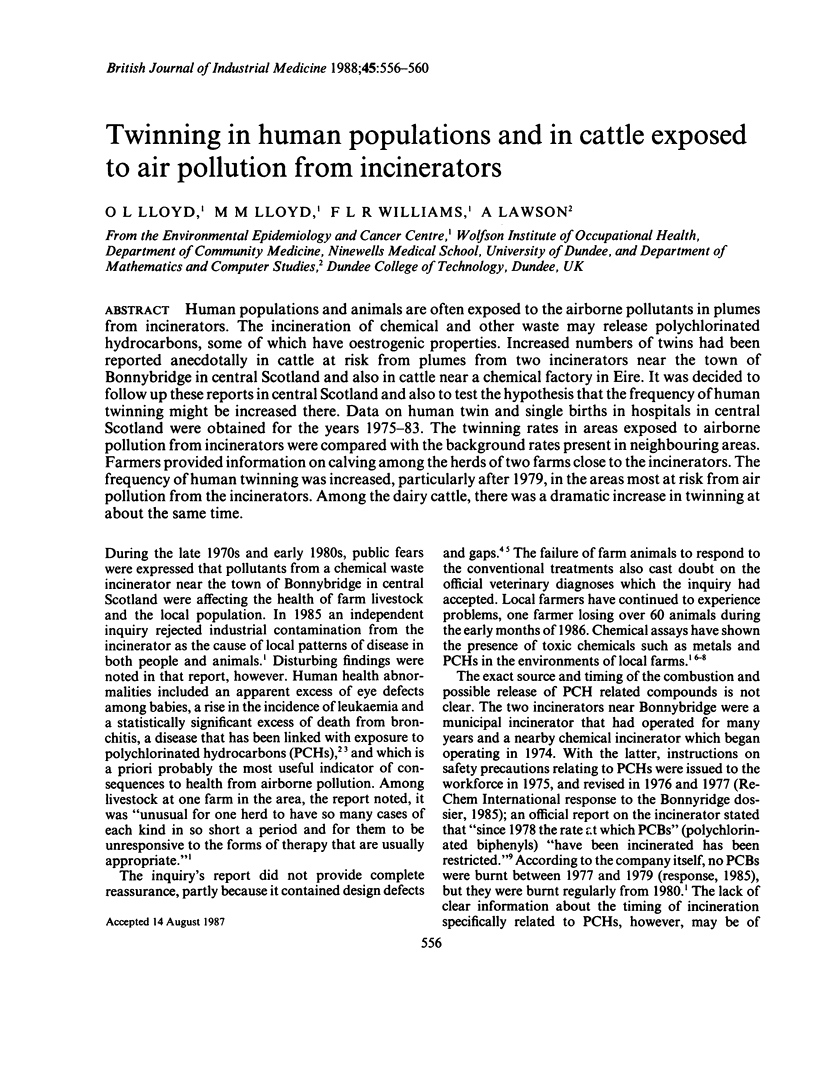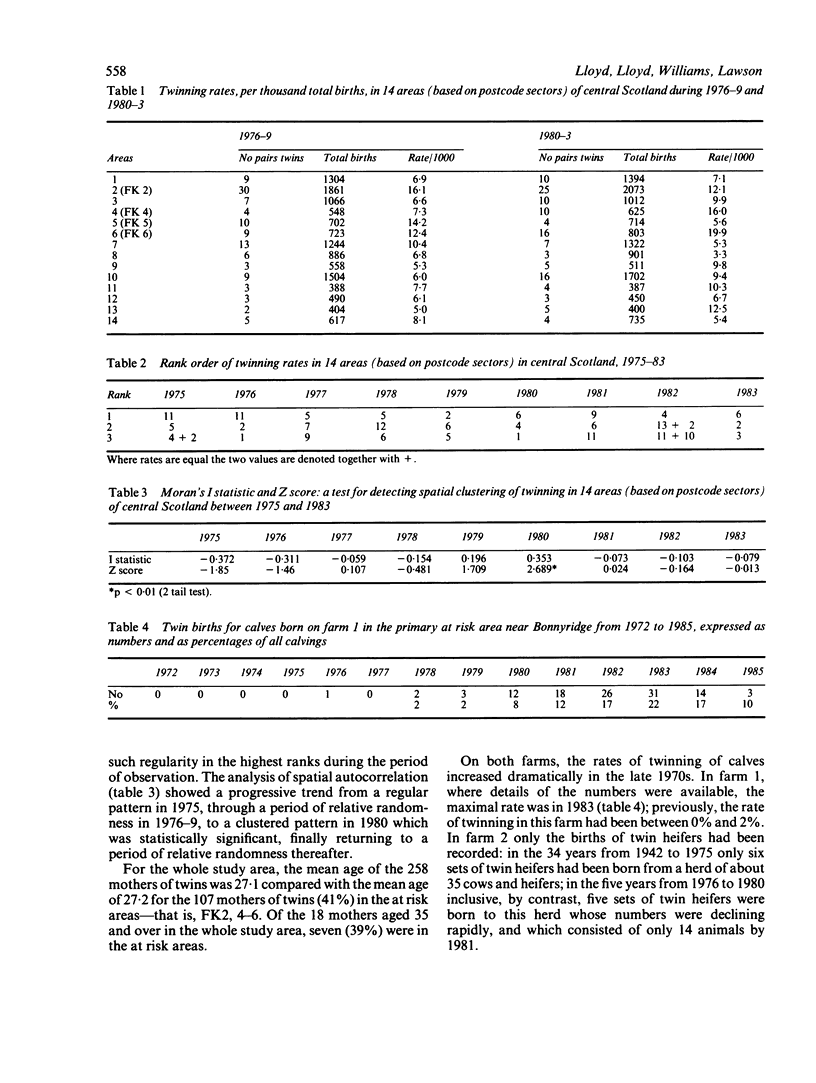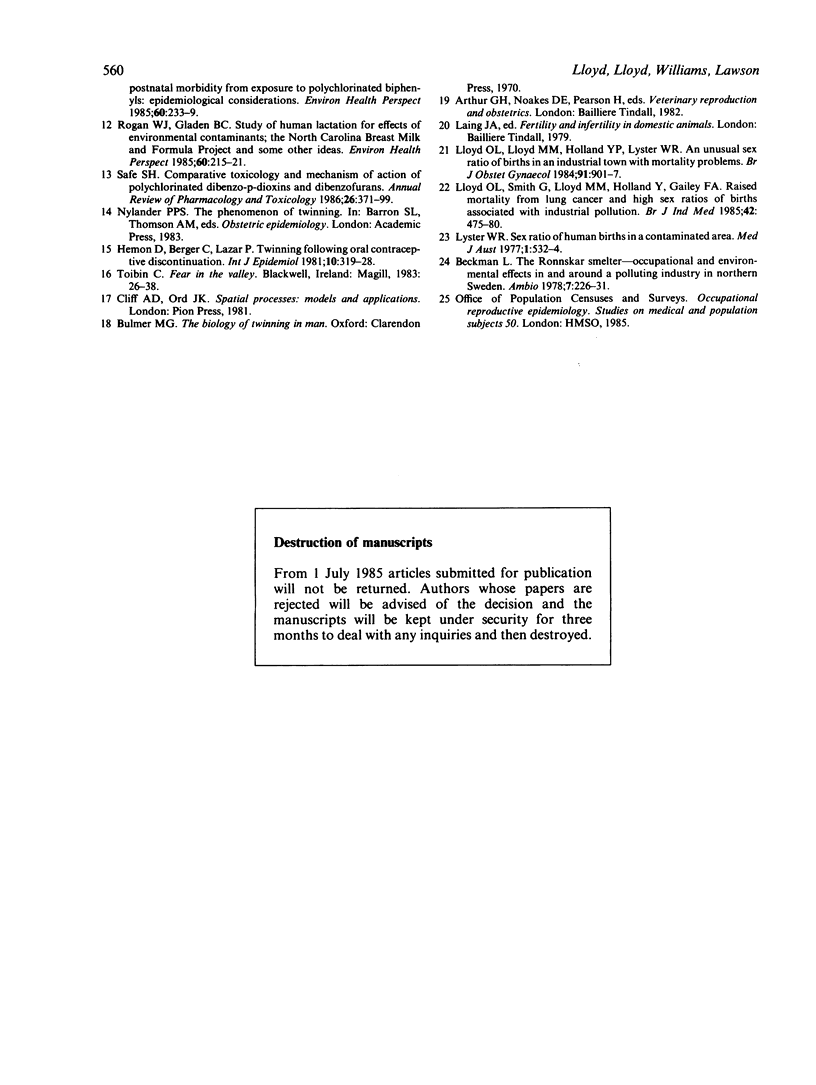Abstract
Human populations and animals are often exposed to the airborne pollutants in plumes from incinerators. The incineration of chemical and other waste may release polychlorinated hydrocarbons, some of which have oestrogenic properties. Increased numbers of twins had been reported anecdotally in cattle at risk from plumes from two incinerators near the town of Bonnybridge in central Scotland and also in cattle near a chemical factory in Eire. It was decided to follow up these reports in central Scotland and also to test the hypothesis that the frequency of human twinning might be increased there. Data on human twin and single births in hospitals in central Scotland were obtained for the years 1975-83. The twinning rates in areas exposed to airborne pollution from incinerators were compared with the background rates present in neighbouring areas. Farmers provided information on calving among the herds of two farms close to the incinerators. The frequency of human twinning was increased, particularly after 1979, in the areas most at risk from air pollution from the incinerators. Among the dairy cattle, there was a dramatic increase in twinning at about the same time.
Full text
PDF




Selected References
These references are in PubMed. This may not be the complete list of references from this article.
- Hemon D., Berger C., Lazar P. Twinning following oral contraceptive discontinuation. Int J Epidemiol. 1981 Dec;10(4):319–328. doi: 10.1093/ije/10.4.319. [DOI] [PubMed] [Google Scholar]
- Lloyd O. L., Lloyd M. M., Holland Y. An unusual sex ratio of births in an industrial town with mortality problems. Br J Obstet Gynaecol. 1984 Sep;91(9):901–907. doi: 10.1111/j.1471-0528.1984.tb03706.x. [DOI] [PubMed] [Google Scholar]
- Lloyd O. L., Smith G., Lloyd M. M., Holland Y., Gailey F. Raised mortality from lung cancer and high sex ratios of births associated with industrial pollution. Br J Ind Med. 1985 Jul;42(7):475–480. doi: 10.1136/oem.42.7.475. [DOI] [PMC free article] [PubMed] [Google Scholar]
- Reggiani G., Bruppacher R. Symptoms, signs and findings in humans exposed to PCBs and their derivatives. Environ Health Perspect. 1985 May;60:225–232. doi: 10.1289/ehp.8560225. [DOI] [PMC free article] [PubMed] [Google Scholar]
- Rogan W. J., Gladen B. C. Study of human lactation for effects of environmental contaminants: the North Carolina Breast Milk and Formula Project and some other ideas. Environ Health Perspect. 1985 May;60:215–221. doi: 10.1289/ehp.8560215. [DOI] [PMC free article] [PubMed] [Google Scholar]
- Rogan W. J., Gladen B. C., Wilcox A. J. Potential reproductive and postnatal morbidity from exposure to polychlorinated biphenyls: epidemiologic considerations. Environ Health Perspect. 1985 May;60:233–239. doi: 10.1289/ehp.8560233. [DOI] [PMC free article] [PubMed] [Google Scholar]
- Safe S. H. Comparative toxicology and mechanism of action of polychlorinated dibenzo-p-dioxins and dibenzofurans. Annu Rev Pharmacol Toxicol. 1986;26:371–399. doi: 10.1146/annurev.pa.26.040186.002103. [DOI] [PubMed] [Google Scholar]
- Warshaw R., Fischbein A., Thornton J., Miller A., Selikoff I. J. Decrease in vital capacity in PCB-exposed workers in a capacitor manufacturing facility. Ann N Y Acad Sci. 1979 May 31;320:277–283. doi: 10.1111/j.1749-6632.1979.tb56610.x. [DOI] [PubMed] [Google Scholar]


